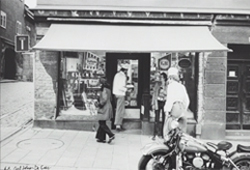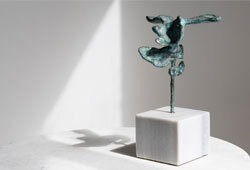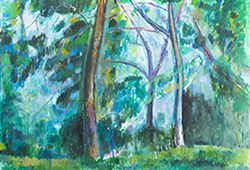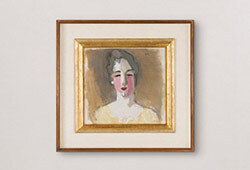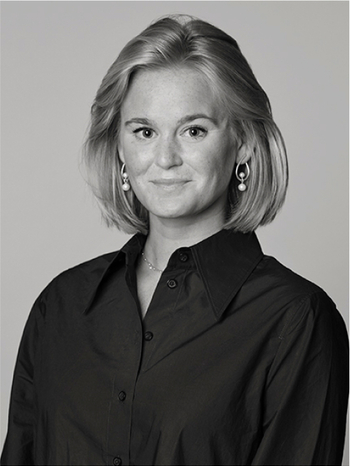Important works by Victor Vasarely at Modern Art & Design
Victor Vasarely
'Nill'
Vasarely worked as graphic designer in Paris in the 1930s and it was then that he started to systematically explore the optical and emotional range of various graphic techniques. While supporting himself and his young family Vasarely developed his own form of geometric abstraction which he varied endlessly, creating different optical patterns with kinetic effect. His early work 'Zebra' from 1937 is considered to be one of the earliest examples of Op Art.
The painting “Nill”, in this auction, was conceived in 1962. Colour had begun to seep back into his work following the artist's Black-White period (1954-1960). Vasarely had studied the laws of visual perception and gestalt theory in great depth and made use of the scientific insights in his art. The beholder of “Nill” is meant to struggle subconsciously with the relative position of the squares and circles that appear in the painting. The human brain attempts to simplify and organize the elements into some form of a system. When perceiving an object in a field of complexity, our brain interprets it as foreground (figure) or background (ground). The effect is a virtual movement. Figures seem rise up to the foreground, through the visual planes of the painting.
Vasarely’s experiments with perception had its starting point in an early memory of tiles in a Metro station in the 30s. It provided an impulse that Vasarely explored and returned to over his lifetime. 'Nill' was painted in 1987, when the artist was 81 years old, the similar motif 'Linn-3' a few years earlier.
Estimate 1 000 000 - 1 500 000 SEK
To the work

› Signed Vasarely and also signed on the reverse. Conceived in 1962 and painted 1987. Numbered P. 1223. Canvas 168 x 156 cm.
'Sixton'
Victor Vasarely’s oeuvre is today more up to date than ever. The vivid colours of his geometric patterns are elements of artistic design – as are the strong contrasts of his black-and-white painting. The visual effects created by hand by Vasarely in the mid-20th century anticipated the aesthetics of today’s computer games and digital art. Vasarely started to systematically explore the optical and emotional range of the various graphic techniques when he worked as graphic designer in Paris in the 1930s. This led to a fascination with the geometric form and its ability to evoke a sensory perception of space, matter, and energy. Vasarely developed his own form of geometric abstraction which he varied endlessly, creating different optical patterns with kinetic effect. While supporting himself and his young family he created many works including Zebra (1937), which is considered by some to be one of the earliest examples of Op Art. He considered colour and form to be inseparable and geometric shapes were arranged in fluorescent colours in such a way that the eye perceived a fluctuating movement.
The painting “Sixton” from 1967 is an example from Vasarely’s exploration of the hexagon in the late 60s. He abandoned the square for some time to delve into the effect of perspective on the cube. The classic, or Renaissance perspective, with vanishing lines and a horizon, records what the eye perceives of the world around us. Instead, he chose the parallel or axonometric perspective in which the vanishing point does not exist. The edges of a cube, as an example, remain parallel. In “Sixton” the cubes are axonometric, formed by a square and two lozenges, thus creating an irregular hexagon. The characteristic of these cubes is their indiscipline and their independence. The cubes constantly modify the surface of the painting, creating an endless illusion of movement by rising in relief or falling back in the hollows. This effect is reinforced by a play of colour and light on the surface of each cube.
By the early 1970s, Victor Vasarely was everywhere. Regarded as the ‘grandfather’ of Op Art, the Hungarian-French abstract artist, then in his late sixties, had watched his pioneering geometric designs and hypnotising optical illusions come to represent his generation. Vasarely’s carefully calibrated patterns of luminous squares and circles was the hottest of hot demands.
Estimate 600 000 - 800 000 SEK
To the work

› Signed Vasarely, also signed and dated verso. Conceived in 1967 and painted 1987. Numbered P 1281 verso. Canvas 112 x 112 cm.
The works will be sold at Modern Art & Design
Viewing: May 16 – 20, Bukowskis, Berzelii Park 1, Stockholm
Open: weekdays 11 am – 6 pm, weekends 11 am – 4 pm
Live auction: May 21– 22, Arsenalsgatan 2, Stockholm
Read more about Modern Art & Design and see the full catalogue
Requests & condition reports Contact specialist

Stockholm
Andreas Rydén
Head Specialist, Art, Deputy Managing Director
+46 (0)728 58 71 39

Stockholm
Lena Rydén
Head of Art, Specialist Modern and 19th century Art
+46 (0)707 78 35 71






